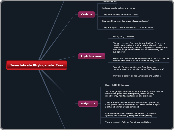Invertebrate Phylogenetic Tree
Calcarea and Silicea
1,500 species
Informal name: "sponges"
They lack true tissues, but are still defined as animals
Example Organism: Azure vase sponge (Callyspongia plicifera)undefined
NOT a part of clade Eumetazoa or Bilateria because they do not have tissues
Cnidaria
10,000 species
Includes corals, jellies, and hydras
They have radially symmtrical bodies
Example Organism: Sea wasp (Chironex fleckeri)
They are a part of clade Eumetazoa, but not Bilateria
Lophotrochozoa
Nearly 139,00 species
Six main groups: Platyhelminthes, Rotifera, Ectoprocta, Brachiopoda, Mollusca, and Annelida. These include flatworms, ectoprocts, rotifers, lamp shells, ribbon worms, molluscs, segmented worms, acanthocephalans, and cycliophoran
Known and indentified by molecular data, that also has the most diverse animal clade in terms of body form
Example Organisms: Sea mat (Membranipora membranacea) and the Giant squid (Architeuthis dux)undefined
They are a part of clades Eumetazoa and Bilateria
Ecdysozoa
Nearly 1,030,000 species
Two main groups: Nematoda and Arthropoda, which includes loriciferans, priapulans, tardigrades, velvet worms, roundworms, insects, crustaceans, and arachnids
They are the most species-rich animal group, proven by having more known species than all other protist, fungus, plant, and animal groups combined
Example Organisms: Parasitic nematode (Trinchinella spiralis) and Fruit flies (Drosophila melanogaster)undefined
They are a part of clades Eumetazoa and Bilateria
Deuterostomia
About 59,085 species
Two main groups:Echinodermata and Chordata (three groups of chordata are invertebrates: they consist of lancelets, tunicates, and hagfishes), and includes hemichordata
Defined primarily by DNA similarities, not developmental similarities
Example Organisms: Sea stars (Asterios forbesii) and Sea cucumbers (Parastichopus californicus)
They are a part of clades Eumetazoa and Bilateria
